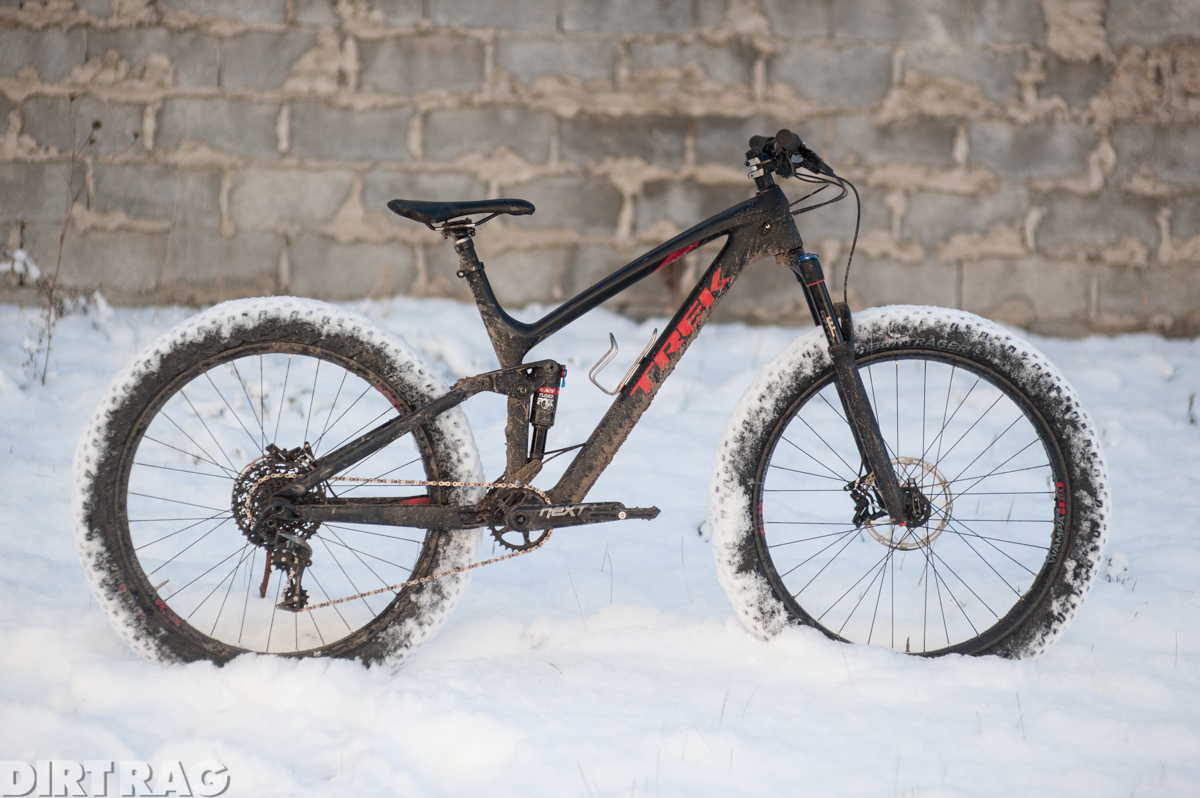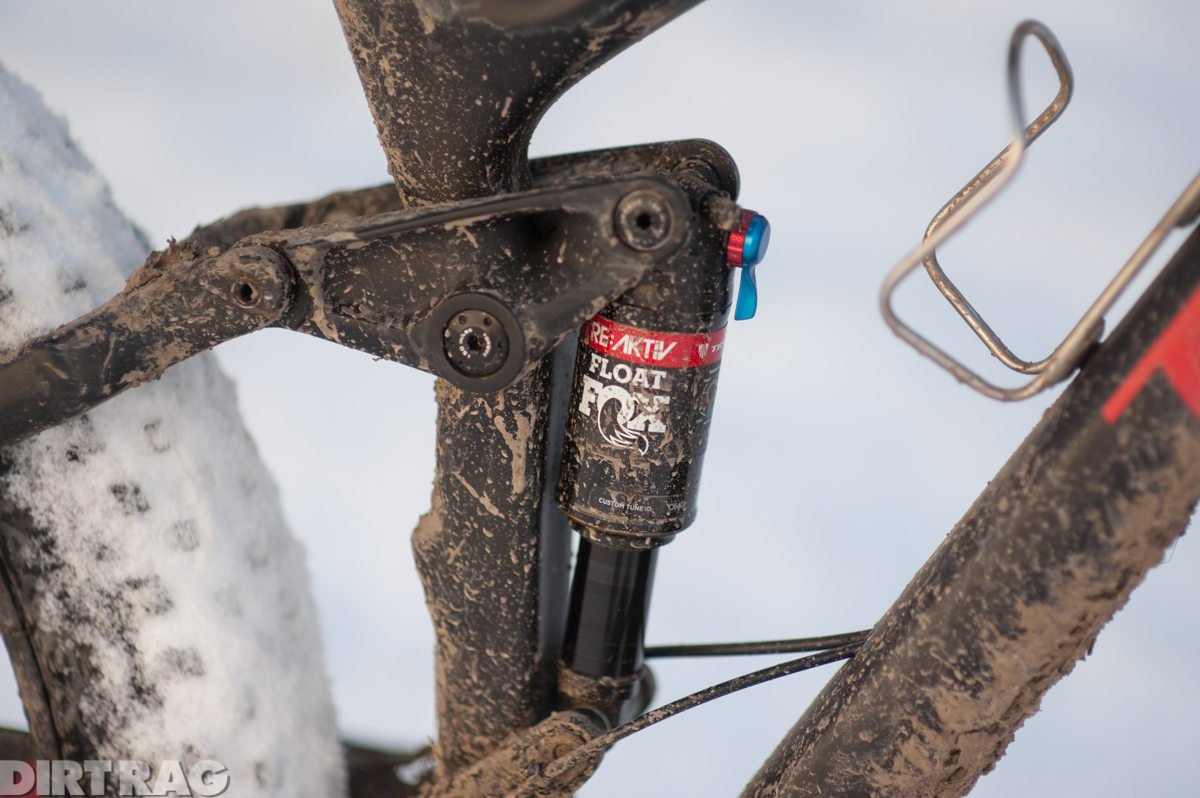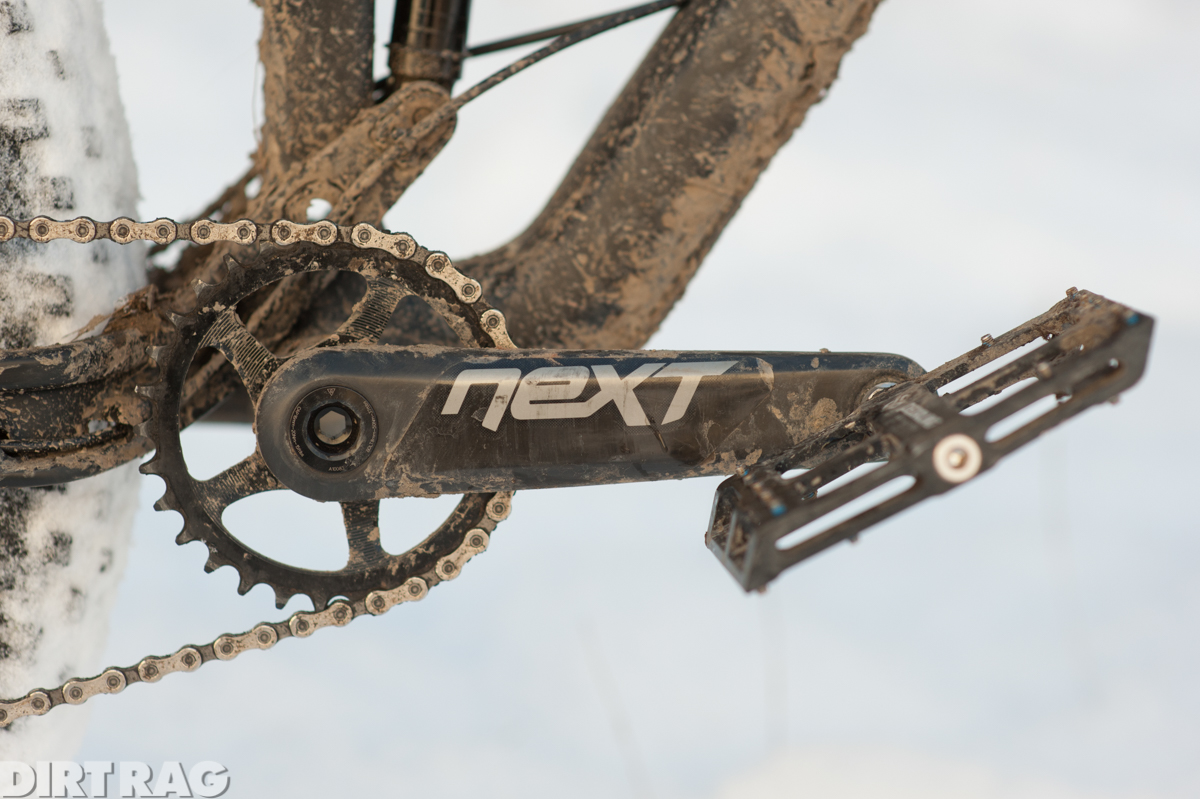Review: Trek Farley EX 9.8
Originally posted on December 23, 2017 at 9:10 amTester: Jon Pratt
Age: 46
Height: 5’10.5”
Weight: 190 lbs.
Inseam: 31”
We’re all used to seeing hybrid bikes out around town or on the local rails-to-trails paths, but the Farley EX 9.8 is a whole new style of hybrid. With the Farley EX, Trek is establishing a platform that combines the high-performance characteristics of its trail bikes, like the Fuel EX, and the monster truck DNA of its fat bike line. Ross Rushin, marketing manager with Trek, explained that the aim of the Farley EX 9.8 was to create “a high-performance bike that can truly perform year round on any terrain, even in the snow and deep sand.” It sounds to me like Trek is trying to redefine the term “quiver-killer” to include all-season as well as all-surface.
From the beginning of this test, I was pretty skeptical that a bike could really do everything well enough to warrant using a single bike throughout the year, in every condition. Yes, there those among us who ride fat bikes in the summer and those who use cross-country bikes throughout the snow-encrusted winter and swear that that’s all they need. While I say more power to them, I do think there is a good deal of compromise with that approach.

So that’s the crazy thing here—even with some of the Farley EX’s inherent “jack of all trades master of none” issues, it does perform well enough in most situations that I could see using it as a single bike all year long. Sure, the rotational weight of the wheels did affect my ability to quickly make it up sustained climbs, and the lack of any real sidewall stiffness can be frustrating when trying to maintain a crisp line through berms or tight singletrack. But, I was able to make it work well enough to still enjoy every one of my rides, no matter the conditions.
After getting it up to rolling speed, I found myself riding into technical sections of trails without much worry about what was directly in front of me but instead focusing a bit farther down the trail. Those of you who have ridden large-tired bikes understand. There is a confidence that the tires will just deform and roll over pretty much anything they encounter. Increase that feeling by adding in the bike’s relatively lightweight build, fantastic Active Braking Pivot system, a dropper post, its well-proven RE:aktiv shock, and a RockShox Bluto RL fork and you get the most fun fat bike I’ve ridden. It does not seem like something an engineer just threw together to see if it would work. Everything feels well-thought-out and purposeful.
While they do fall in line with the bike’s overall objective’ its large, low-pressure tires are problematic in certain situations. They are harder to steer because they lack the more aggressive bite of the standard or plus sized tire you find on “normal” trail bikes. It’s most notable when riding through moderate turns and not being able to straighten back out. You sometimes find yourself pointed at the edges of the trail instead of down the middle. Non-fat bikes are better able to control the line through switchbacks, berms and various other technical sections.

Throughout my time on the Farley EX 9.8 I was as pleasantly surprised by its do-it-all capability as I was by its price. In today’s marketplace $5,499 is by no means an astronomical price tag for a mostly carbon trail bike, let alone one that’s got such big shoes. To start with, those Bontrager Hodag tires retail at $120 apiece and are sitting on 80 mm full carbon wheels! The aluminum version Farley EX 8 comes in at $2,000 less, uses a few less-expensive parts, keeps the same suspension and only adds a few pounds. I really see the Farley EX line appealing to the rider who can’t afford, or doesn’t want to own, multiple bikes for multiple conditions. If you find yourself surrounded by snow or sand for a good part of the year but want a capable, full-suspension trail bike during those other months, you owe it to yourself to check this bike out.
Plusses
• Full suspension
• Dropper post
• Feels unstoppable
Minuses
• Heavy for a modern trail bike
• Rotational weight of wheels
• Some loss of fine control due to tire size

Specs:
Reach: 17.8”
Stack: 24.1”
Top Tube: 24.9”
Head Tube: 68.8 °
BB Height: 13.9”
Chainstays: 17.4”
Weight: 31 lbs.
w/o pedals, specs based on size tested
Price: $5,499
Sizes: 15.5, 17.5, 19.5(tested), 21.5
